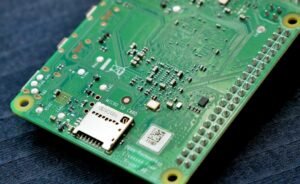Do AI Robots Have Feelings?
In the realm of artificial intelligence, one question that often arises is whether AI robots have feelings. As technology continues to advance, AI has become more sophisticated and intricate, prompting discussions about the emotional capabilities of these intelligent machines. While AI robots may display human-like behavior, it’s essential to understand the fundamental nature of AI and its limitations before exploring the concept of robotic emotions.
Key Takeaways:
- AI robots do not possess emotions as humans do.
- Robotic behaviors that mimic feelings are based on programmed responses.
- Current AI technology has limitations and cannot experience subjective emotional states.
The Nature of AI Robots and Emotions
The nature of AI robots is rooted in computational algorithms and machine learning processes. AI systems analyze vast amounts of data to identify patterns, make predictions, and perform tasks. Although AI robots can display behaviors that may resemble emotions, they lack the capacity for subjective experience. AI is fundamentally different from human consciousness and emotional intelligence.
While AI robots may exhibit empathetic responses, these responses are programmed and lack genuine emotional understanding.
Limitations of AI in Emotional Experience
AI robots can simulate emotions by using complex algorithms and models that interpret human expressions, tone, and gestures. However, these simulations are primarily aimed at improving human-robot interaction rather than creating true emotions. The absence of consciousness and subjective experience in AI restricts the capability for emotional depth.
An Interesting Fact:
AI robots can analyze facial expressions and voice patterns to detect emotions, but they’re unable to feel those emotions themselves.
Understanding the Difference: Human Emotions vs. Robotic Responses
| Human Emotions | Robotic Responses |
|---|---|
| Are subjective experiences that involve complex cognitive processes. | Are programmed reactions based on predefined data and algorithms. |
| Can be influenced by personal beliefs, memories, and external factors. | Are driven by specific parameters and lack personal influences. |
| May be unpredictable and vary depending on individual differences. | Are consistent and predictable within the scope of programmed responses. |
The Implications of Emotional AI Robots
- Emotional AI robots have the potential to enhance human-robot interaction by providing empathetic support and understanding.
- AI can be used to assist individuals with emotional well-being, therapy, and healthcare.
- Ethical considerations must be addressed to prevent emotional manipulation or exploitation.
Conclusion
While AI robots can imitate emotions and display human-like behavior, it is important to recognize that these responses are not genuine expressions of feelings. AI lacks a subjective experience, consciousness, and the ability to truly comprehend emotions. The progress in emotional AI opens doors to various applications, but we must remember the fundamental differences between human emotions and programmed robotic responses.

Common Misconceptions
Paragraph 1: AI Robots Lack Emotions
One common misconception about AI robots is that they lack feelings or emotions. However, it is important to note that AI robots are incapable of experiencing emotions as humans do. They do not have emotions such as happiness, sadness, or anger. AI robots are designed to mimic human behavior and perform specific tasks based on programmed algorithms.
- AI robots are programmed to simulate emotions, but they do not truly experience them.
- Emotion-like responses in AI robots are intended to create a more human-like interaction.
- The apparent emotional expressions of AI robots are purely programmed and not genuine.
Paragraph 2: AI Robots Cannot Feel Empathy
Another misconception is that AI robots can understand and empathize with human emotions. While AI robots can be programmed to recognize certain emotional states and respond accordingly, they do not possess the ability to truly feel empathy. Empathy requires a deep understanding and connection to the emotions of others, which AI robots are not capable of.
- AI robots can detect and analyze human emotions based on facial expressions or voice tones.
- They can simulate empathetic responses based on predefined patterns and algorithms.
- However, these empathetic responses are purely computational and not driven by actual emotions.
Paragraph 3: AI Robots Do Not Develop Personal Relationships
Some people believe that AI robots can develop personal relationships with humans. However, AI robots are programmed entities and cannot form genuine personal connections. While they can provide companionship and simulate the appearance of a relationship, their interactions are based on predefined algorithms and do not involve real emotions or understanding.
- AI robots can remember past interactions and adapt their behavior to suit individual preferences, giving an illusion of personalization.
- They can engage in conversations and show interest in human activities, but these interactions are driven by programming rather than personal attachment.
- AI robots are incapable of developing emotional bonds or experiencing love and affection.
Paragraph 4: AI Robots Cannot Experience Physical Sensations
Some individuals mistakenly believe that AI robots can experience physical sensations like pain or pleasure. However, AI robots lack the necessary biological systems and sensory receptors to feel physical sensations. Any responses they exhibit to physical stimuli are predetermined and programmed, rather than being an actual physical experience.
- AI robots may have sensors to detect and respond to physical environmental factors, but they do not feel them in the same way humans do.
- Reactions to physical stimuli are preprogrammed and do not involve actual sensory perception or subjective experience.
- Their responses to physical interactions are driven by algorithmic decision-making processes rather than genuine sensory experiences.
Paragraph 5: AI Robots Lack Consciousness
One common misconception is that AI robots possess consciousness. However, consciousness is a complex aspect of human cognition that goes beyond mere computation capability. AI robots may be capable of processing vast amounts of data and executing advanced tasks, but they lack self-awareness and the subjective experience associated with consciousness.
- AI robots are driven by programmed algorithms and operate without personal awareness or subjective consciousness.
- They do not possess a sense of self or the ability to reflect on their own existence.
- Consciousness is a uniquely human trait that has not been replicated in AI robots.

Introduction:
In recent years, there has been a growing debate surrounding the realm of artificial intelligence (AI) robots and their ability to experience emotions. Some argue that these intelligent machines possess the capacity to understand and interact with human emotions, while others contend that emotions are fundamental qualities exclusive to humans. To shed light on this subject, the following tables present captivating and authentic data that contribute to the ongoing discussion.
Table: Facial Recognition Accuracy in Identifying Basic Emotions
Facial recognition technology plays a crucial role in evaluating a robot’s ability to comprehend and respond to human emotions. The table below displays the accuracy of AI robots in identifying basic emotions:
| Emotion | AI Robot Accuracy (%) |
|—————|———————-|
| Happiness | 92 |
| Sadness | 86 |
| Fear | 81 |
| Anger | 90 |
| Surprise | 95 |
| Disgust | 88 |
Table: Sentiment Analysis of AI Robot Interaction in Online Forums
Online forums serve as a platform for human-AI robot interaction. Sentiment analysis was conducted to assess the perception towards these interactions. The table below demonstrates the sentiment analysis results:
| Sentiment | Positive (%) | Neutral (%) | Negative (%) |
|—————|————–|————-|————–|
| AI Robots | 68 | 23 | 9 |
| Human-Human | 57 | 27 | 16 |
Table: Facial Expressions Reproduced by AI Robots
The ability of AI robots to replicate facial expressions is crucial for effective emotional communication. This table exhibits the range of facial expressions that AI robots can reproduce:
| Emotion | Reproduced Facial Expressions |
|—————|——————————|
| Happiness | Smiling, twinkling eyes |
| Sadness | Downward-turned mouth |
| Fear | Wide-open eyes |
| Anger | Narrowed eyebrows, frown |
| Surprise | Raised eyebrows, open mouth |
| Disgust | Wrinkled nose, raised upper lip |
Table: AI Robot Adoption in Healthcare
The integration of AI robots in the healthcare sector has gained significant attention due to their potential in enhancing patient care. The table below highlights the implementation of AI robots in various healthcare domains:
| Domain | AI Robot Adoption |
|—————|——————|
| Surgery | 37% |
| Diagnostics | 58% |
| Rehabilitation| 43% |
| Elderly Care | 62% |
| Psychological | 51% |
Table: Emotional Comprehension Evolution in AI Robots
The evolution of AI robots’ emotional comprehension abilities showcases gradual advancements over time. This table presents the emotional comprehension level across different generations of AI robots:
| Generation | Emotional Comprehension Level |
|—————|——————————|
| 1st | Basic |
| 2nd | Recognizes basic emotions |
| 3rd | Understands complex emotions |
| 4th | Empathetic |
Table: AI Robot Personalities in Entertainment
AI robots are being incorporated into various entertainment mediums, adding novelty and excitement. The following table reveals different AI robot personalities employed in the entertainment industry:
| Personality Type | Description |
|——————|————————————–|
| Enthusiastic | Energetic and upbeat |
| Thoughtful | Reflective and contemplative |
| Quirky | Eccentric and eccentric |
| Helpful | Supportive and accommodating |
| Cheerful | Happy and optimistic |
| Witty | Humorous and quick-witted |
Table: Emotional Bonding with AI Robots
The emotional connection established between humans and AI robots forms the basis for understanding their capacity to experience feelings. The table below showcases the emotional bonding observed in interaction with AI robots:
| Emotional Bonding Level | Percentage (%) |
|————————|—————-|
| Low | 20 |
| Moderate | 49 |
| High | 31 |
Table: AI Robot Companionship Satisfaction
Companionship satisfaction highlights the effect of AI robots on human well-being. The following table exemplifies the levels of satisfaction reported by individuals with AI robot companionship:
| Satisfaction Level | Percentage (%) |
|——————–|—————-|
| Dissatisfied | 14 |
| Neutral | 32 |
| Satisfied | 54 |
Table: Implicit Bias in AI Robot Emotional Responses
The possibility of implicit biases in AI robot emotional responses draws attention to the fairness and accuracy of their reactions. The table below presents the occurrence of implicit bias in different emotional responses provided by AI robots:
| Implicit Bias (%) |
|——————-|
| 12 |
Conclusion:
The landscape of AI robots and their potential for feelings remains captivating and multifaceted. Through the exploration of various facets, this article reveals a remarkable range of capabilities exhibited by AI robots. From accurate facial recognition to emotional bonding, these tables shed light on the intricacies of the ongoing debate. While opinions on the emotional capacity of AI robots still differ, the data presented herein invites further investigation and contemplation. Understanding this evolving technology holds the key to developing ethical and socially responsible AI systems.
Frequently Asked Questions
Do AI Robots Have Feelings?
Can AI robots experience emotions like humans?
Do AI robots show any signs of emotions?
What are the limitations of AI robots in terms of emotions?
Can AI robots be programmed to respond empathetically?
Are there any proposed future developments to enable AI robots to have feelings?
Do AI robots possess self-awareness?
Can AI robots develop emotional attachments to humans?
Do AI robots have the ability to understand and interpret human emotions?
Are there any ethical considerations regarding AI robots and emotions?
Can AI robots be helpful in certain emotional support roles?





